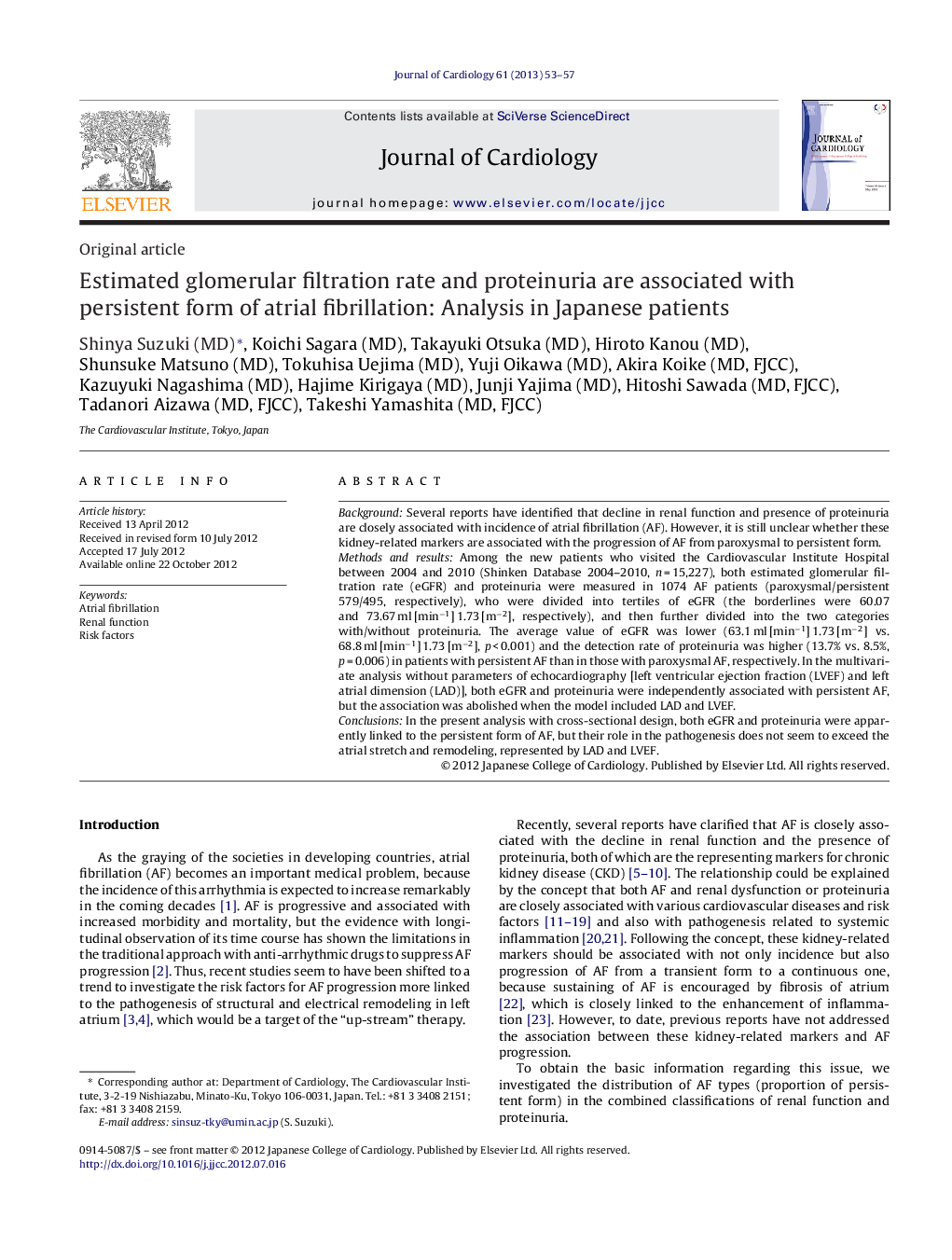| Article ID | Journal | Published Year | Pages | File Type |
|---|---|---|---|---|
| 2963219 | Journal of Cardiology | 2013 | 5 Pages |
BackgroundSeveral reports have identified that decline in renal function and presence of proteinuria are closely associated with incidence of atrial fibrillation (AF). However, it is still unclear whether these kidney-related markers are associated with the progression of AF from paroxysmal to persistent form.Methods and resultsAmong the new patients who visited the Cardiovascular Institute Hospital between 2004 and 2010 (Shinken Database 2004–2010, n = 15,227), both estimated glomerular filtration rate (eGFR) and proteinuria were measured in 1074 AF patients (paroxysmal/persistent 579/495, respectively), who were divided into tertiles of eGFR (the borderlines were 60.07 and 73.67 ml [min−1] 1.73 [m−2], respectively), and then further divided into the two categories with/without proteinuria. The average value of eGFR was lower (63.1 ml [min−1] 1.73 [m−2] vs. 68.8 ml [min−1] 1.73 [m−2], p < 0.001) and the detection rate of proteinuria was higher (13.7% vs. 8.5%, p = 0.006) in patients with persistent AF than in those with paroxysmal AF, respectively. In the multivariate analysis without parameters of echocardiography [left ventricular ejection fraction (LVEF) and left atrial dimension (LAD)], both eGFR and proteinuria were independently associated with persistent AF, but the association was abolished when the model included LAD and LVEF.ConclusionsIn the present analysis with cross-sectional design, both eGFR and proteinuria were apparently linked to the persistent form of AF, but their role in the pathogenesis does not seem to exceed the atrial stretch and remodeling, represented by LAD and LVEF.
